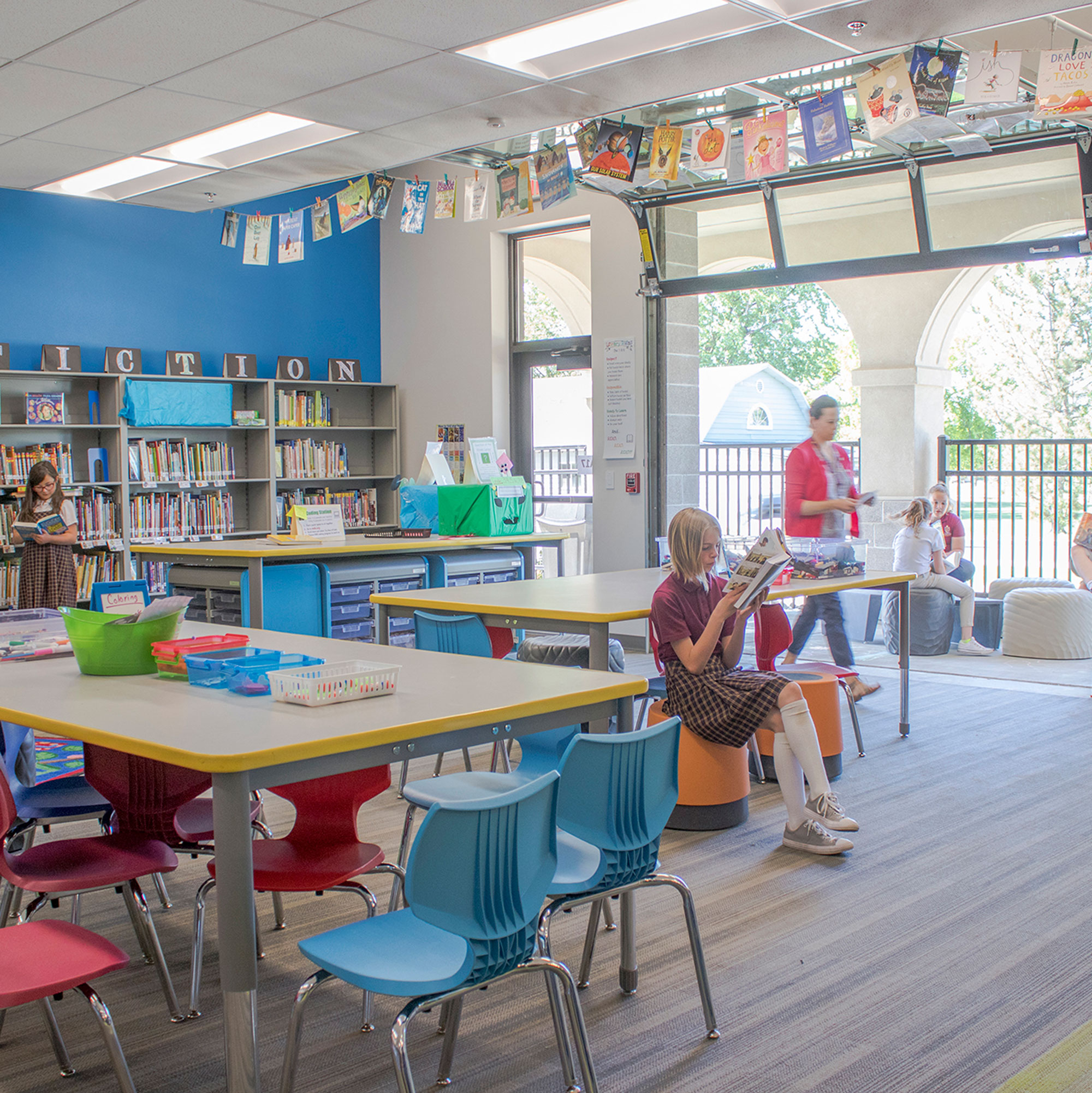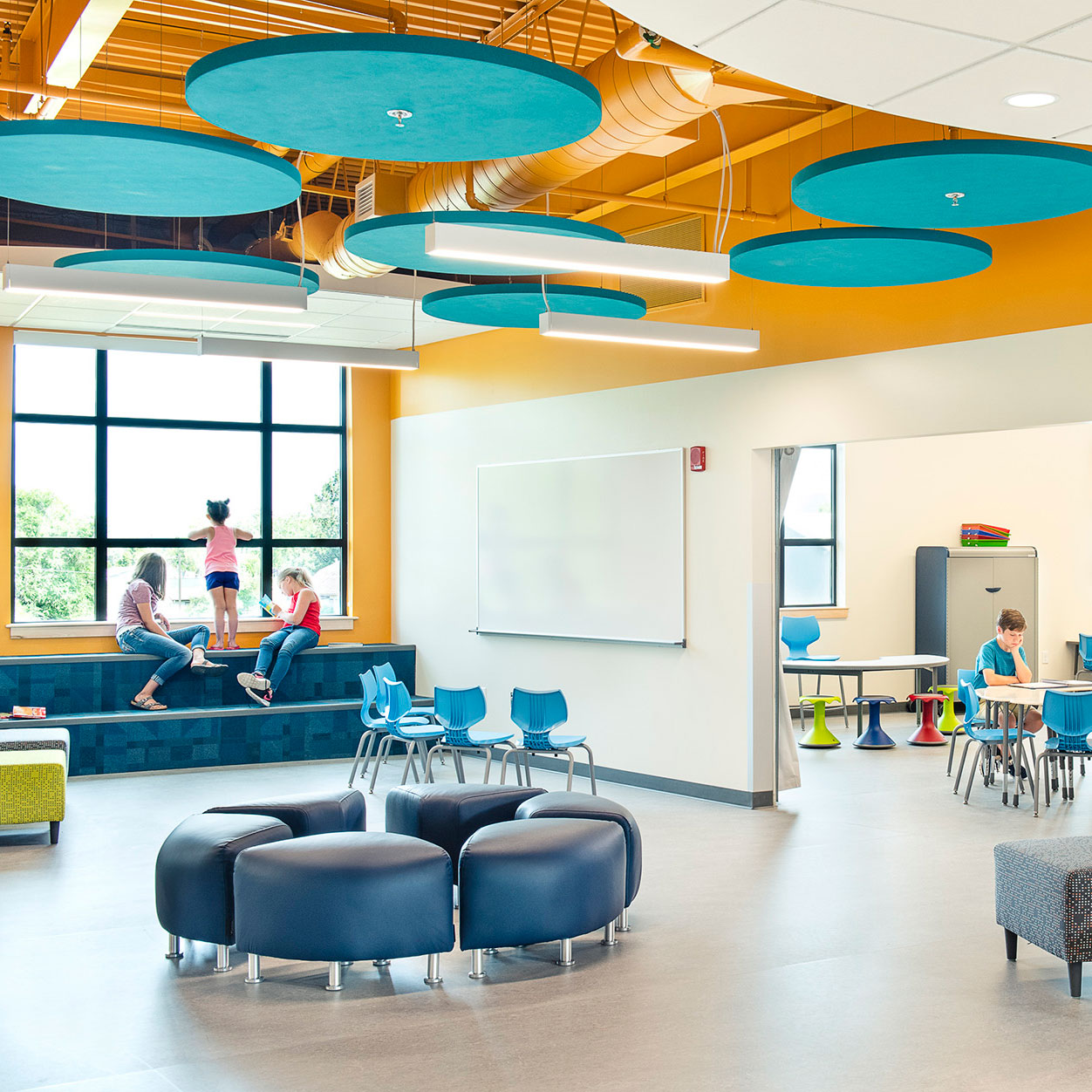Indoor Air Quality Solutions for Healthy Schools and Healthy Students
What you need to know to improve IAQ as kids transition back into the classroom.
The work to assess and improve indoor air quality (IAQ) is a top priority for school districts as they look to best utilize billions in COVID-19 relief funds and prepare for post-pandemic, in-person learning. With this much-needed funding becoming available, there’s an incredible opportunity to combine lessons learned from the past year with an amplified commitment to designing healthy schools.
To support this need, our mechanical engineering group set out to create a tool for assessing air quality in indoor spaces and determining recommended solutions, particularly for learning environments. The goal is to help education clients determine a path forward that takes into consideration their existing systems as well as facilities planned for the future. We not only want to address the current pandemic, but also ensure HVAC systems that will prove beneficial to building users and occupants for decades to come.

Studies show that increased ventilation in classrooms results in improved test scores and recognition rates and a decrease in upper respiratory infections.
Classrooms that have healthy indoor air quality and ideal thermal comfort place students at an advantage when it comes to their ability to learn, retain information, and thrive.
Sources: below
Milton et al. (2020), University of Maryland Study, Ventilation & Confirmed Acute Respiratory Infection (ARI) Rates
Allen et al. (2020), Harvard Study – Influences on the Residential Environment on Undergraduate Students Health
Zhang & Dear (2017), Thermal Health and Thinking
Harvard School of Public Health, COGFX and Heatwaves in University Dormitories
Toyinbo et al. (2016), Ventilation and Health
Coley et al. (2007), Ventilation and Thinking
Bako-Biro et al. (2011),Ventilation & Performance
Haverinen-Shaugnessy et al. (2018), Ventilation & Math Scores
Park (2016), New York Schools Temperature Effects on Test Scores
How we can help with the decisions ahead
Using our custom assessment tool or “report card,” we’ll review your current facilities and HVAC systems targeting indoor air quality improvement strategies. The tool analyzes levels of carbon dioxide, fresh air ventilation rates, filtration levels, source contaminant control, and best industry practices to help us determine areas for improvement and the right elements to tackle as part of your upgrade project. Each assessment is targeted to your school’s unique building needs.
Our mechanical specialists will then compile the information from the assessment and indoor air quality scoring and provide specific recommendations based upon upgrade advantages and costs. These recommendations will emphasize the greatest utilization of first-cost dollars for maximum long-term benefits for your school district’s indoor air quality needs. Additionally, we’ll provide an easy-to-understand report so you can share it with your administration team, board, and governing body for further action.
In recent years, comparative risk studies performed by EPA and its Science Advisory Board (SAB) have consistently ranked indoor air pollution among the top five environmental risks to public health. Good IAQ is an important component of a healthy indoor environment and can help schools reach their primary goal of educating children.
Source: epa.gov

We’re ready when you are
If you’re interested in working with our team to develop an indoor air quality assessment for your school or district, we can move quickly to provide a quote based on the number of facilities you would like assessed and other general building data. Due to the importance of this evaluation, the timing of available funding, and the desire to influence positive change immediately, our goal is to have assessment results back to you within 30 days.
What your IAQ assessment will provide
- Evaluation of regional air quality and local contaminant sources that impact outdoor air quality.
- Assessment of the suitability of outside air for ventilation purposes and recommended treatment if necessary.
- Observation of the age, condition, and configuration of the existing HVAC systems.
- Summary and recommendations for potential upgrades to HVAC systems.
- Recommendations for operational and maintenance adjustments.

Coming soon! Healthy Schools, Healthy Students webinar
Confronting the pandemic over the past 12+ months has brought to light the pressing need to invest in more holistic design solutions for learning environments to provide long-term benefits for the people who use these spaces. This goes beyond identifying specific solutions to address COVID-19 and the spread of airborne disease to looking at the synergy between systems and spaces to design for overall health, wellness, and student performance, far into the future.
On April 22, we’ll be hosting an “ask the experts” webinar focused on indoor air quality and how we can use a variety of perspectives to ensure the improvements we make now are more than just a quick fix and encompass best design practices from across disciplines. Join our Education Design Studio Director Corey Johnson, Interior Designer Kaare Sola, Landscape Architect Dayton Rush, and myself, Alex Russell to add the mechanical engineering perspective, for a conversation on the elements to consider as we invest in upgrades to current buildings and facilities and plan for new ones.


